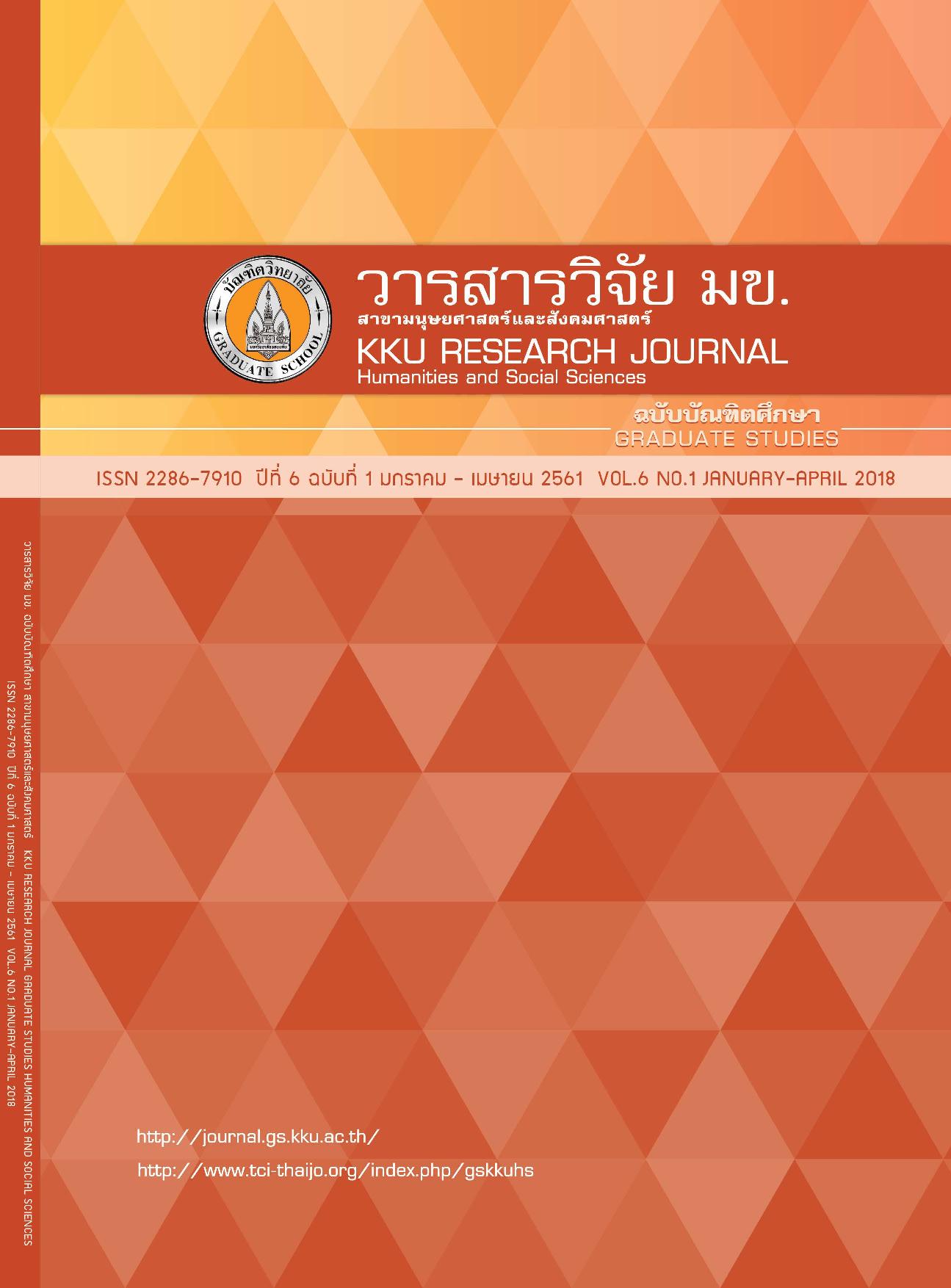การคิดเชิงความน่าจะเป็นของนักเรียนชั้นมัธยมศึกษาปีที่ 5 ในชั้นเรียน ที่ใช้วิธีการแบบเปิด (Probabilistic Thinking of 11th Grade Students in Classroom Using Open Approach)
Keywords:
การคิดเชิงความน่าจะเป็น (Probabilistic thinking), วิธีการแบบเปิด (Open approach)Abstract
การวิจัยนี้มีวัตถุประสงค์เพื่อสำรวจการคิดเชิงความน่าจะเป็นของนักเรียนชั้นมัธยมศึกษาปีที่ 5 ในชั้นเรียนที่ใช้วิธีการแบบเปิด ใช้ระเบียบวิจัยเชิงคุณภาพโดยการวิเคราะห์โพรโทคอล (Protocol Analysis) และบรรยายเชิงวิเคราะห์ (Analytic Description) กลุ่มเป้าหมายเป็นนักเรียนชั้นมัธยมศึกษาปีที่ 5 ปีการศึกษา 2558 จำนวน 3 กลุ่ม กลุ่มละ 3 คน ผู้วิจัยทำการเก็บรวบรวมข้อมูลโดยดำเนินการสอนด้วยวิธีการแบบเปิดตามแนวคิด Inprasitha [1] เครื่องมือที่ใช้ในการเก็บรวบรวมข้อมูลประกอบด้วย แผนการจัดการเรียนรู้เรื่องความน่าจะเป็นจำนวน 4 แผน
เครื่องบันทึกวีดิทัศน์ เครื่องบันทึกเสียง เครื่องบันทึกภาพนิ่ง ซึ่งบันทึกการคิดเชิงความน่าจะเป็นของนักเรียนในการทำกิจกรรมตลอดการจัดการเรียนการสอนในชั้นเรียน และวิเคราะห์การคิดเชิงความน่าจะเป็นในสถานการณ์ปริภูมิตัวอย่างโดยใช้กรอบทฤษฎีเกี่ยวกับการคิดเชิงความน่าจะเป็นของ Jones, Langrall, Thornton and Mogill [2] ผลการวิจัยพบว่าในสถานการณ์ปริภูมิตัวอย่าง นักเรียนมีการคิดเชิงความน่าจะเป็นในสถานการณ์ปริภูมิตัวอย่างปรากฏอยู่ในระดับที่ 4 นั่นคือนักเรียนสามารถระบุผลลัพธ์ที่สามารถเกิดขึ้นได้ทั้งหมดจากการทดลองสุ่ม 1 ครั้งได้อย่างสมบูรณ์ และใช้วิธีการที่เป็นระบบโดยใช้การเขียนแผนภาพต้นไม้ในการแสดงการหาผลลัพธ์ที่เป็นไปได้ทั้งหมดของการทดลองสุ่ม 2 ครั้งและ 3 ครั้งได้อย่างสมบูรณ์
This research aimed to explore the Probabilistic Thinking of 11th Grade Students in Classroom using Open Approach. Analysis of the collected data was done by mean of protocol analysis and analytic description. The target group was 3 groups of 3 people of 11th grade students in 2015 school year. The researcher collected data through teaching with Open Approach according to Inprasitha [1]. The data was collected by using 4 lesson plans, video recorder, images recorder and audio tape recorder using recorder probabilistic thinking of students while teaching in the classroom and analysed probabilistic thinking in sample space item according to Jones, Langrall, Thornton and Mogill [2]. The results showed that children exhibiting probabilistic thinking in sample space item at level 4 that is the highest level of probabilistic thinking, children consistently listed the complete set of outcomes for a one-stage experiments and they use a systematic strategy to list the completely outcomes of both two- and three-stage experiments.



